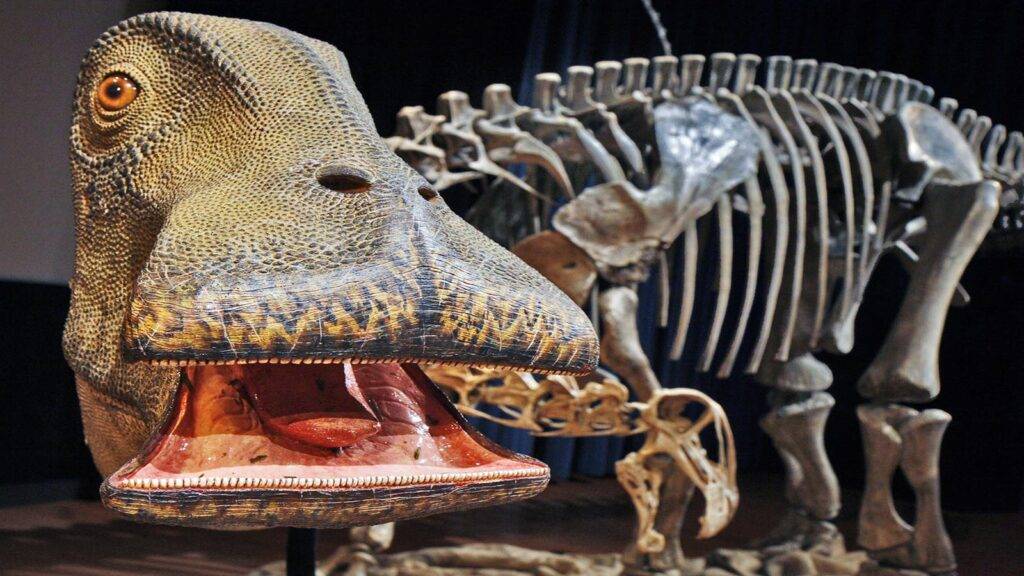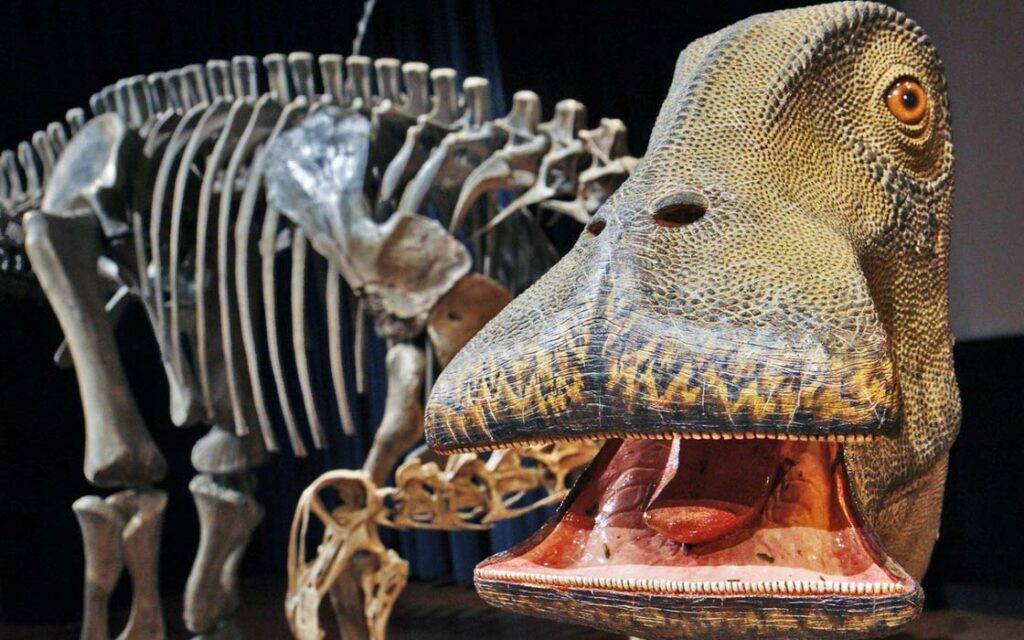Dinosaurs have always fascinated us with their colossal sizes and unique features. Among the myriad of dinosaur species, one stands out for its dental abundance – the Nigersaurus. Unearthed from the depths of the Sahara Desert, this peculiar herbivore boasted an astounding 500 teeth.

500 Teeth Dinosaur Name: The Nigersaurus
An unorthodox herbivore, Nigersaurus grazed the Sahara Desert around 110 million years ago. With a length of over 29 feet and a weight of approximately 4.4 tons, it was akin in size to a modern African elephant. This small-headed sauropod, belonging to the plant-eating dinosaur group, left its mark on history not for its size but for its unique dental arrangement.
What Kind of Dinosaur Has 500 Teeth?
Nigersaurus’ claim to fame lies in its dental peculiarities. “This dinosaur had 500 teeth,” says the University of Chicago’s Paul Sereno. Unlike its sauropod counterparts, Nigersaurus possessed dental batteries – vertically stacked columns of replaceable teeth. These columns, packed like canned sardines, allowed the dinosaur to comfortably house over 500 teeth in its mouth.
The orientation of Nigersaurus’ teeth was a unique feature. All the tooth columns in its dental batteries were lined up at the front of its mouth, along the muzzle’s gently curved outer edge. This peculiar arrangement hints at the dinosaur’s feeding habits. Despite its short neck, Nigersaurus likely fed at ground level, resembling the grazing behavior of a cow.
Nigersaurus’ wide muzzle, likened to a vacuum cleaner by Sereno, was perfectly designed for ground-level feeding. Named after the Republic of Niger where its fossils were discovered, this dinosaur roamed a landscape covered with forests and braided rivers, keeping an eye out for the colossal Sarcosuchus, a relative of modern crocodiles.
Constant Dental Maintenance
With its penchant for ground-level vegetation, Nigersaurus must have faced considerable wear and tear on its dental health. Fortunately, a study published in PLOS One in 2013 reveals that Nigersaurus likely replaced each tooth every 14 days, ensuring a constant supply of fresh replacement teeth.

Nigersaurus remained under the radar for decades after the first fossils were discovered in the 1950s. The fragility of its bone structure and the isolated nature of the fossils initially left scientists with incomplete information.
It wasn’t until 1997 that Sereno’s field team uncovered enough material to reconstruct 80% of the dinosaur’s skeleton, revealing the intricate dental batteries and the vacuum cleaner-like mouth.
Featherweight Skull and Airy Vertebrae
Nigersaurus presented further oddities beyond its dental marvels. A 2007 study led by Sereno described that its skull had a “featherweight” structure, with some bones measuring under 0.08 inches thick. Moreover, its vertebrae took the concept of hollow bones to the extreme, containing more air than bone, much like today’s birds.
Nigersaurus, with its 500 teeth and distinctive dental batteries, adds a fascinating chapter to the dinosaurian chronicles. Unraveling the mysteries of this small-sized sauropod not only sheds light on its unique features but also emphasizes the diversity within the dinosaur kingdom.


